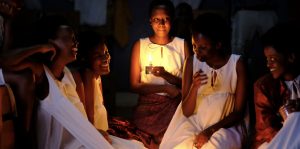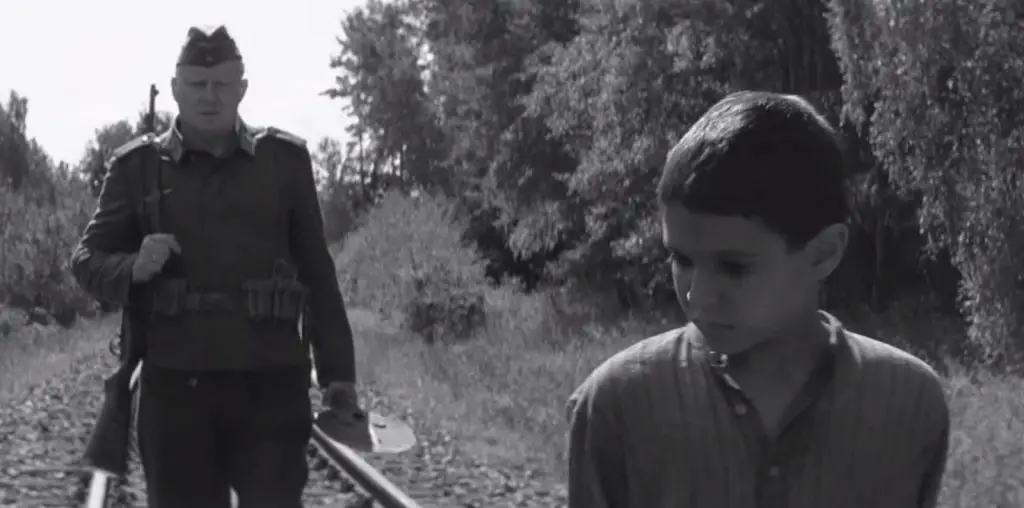
This dubious landowner is the odd MVP character of the film. The man appears to be the great divider as he is shady from day one, and he is a “sketchy sketcher” interested in painting only Tutsi young girls due to their racial features and ancient tales, which make this role a scary yet fascinating one. The film further delves into the supernatural/transcendent aspects with this myth-seeker in a quest for exoticism. This quest puts things into perspective by introducing a local “witch” and showing how some of the girls are still attached to their roots despite being “formatted “at the boarding school.
So there are a lot of surreal stuff in the film that made it quite an immersive experience, coupled with an admirable jazzy soundtrack that might actually fool one into thinking this is one of Allen or his cinematic followers’ movie (well, stories about bobos and hipsters in an existential crisis in the city do not have the monopoly on Jazz!) But one could wish they explored that side a bit more. Although it would not help with the fact that the film is not too subtle or often highly metaphorical in instances where it should not. But being a dramatized biography, it is not impossible to see how and why things unfolded the way they did.

“…there is another layer of horror that could be linked to the film’s central setting.”
Besides the foreshadowing of the atrocities of the Rwandan Civil War, there is another layer of horror that could be linked to the film’s central setting. It seems there is always something sinister about those institutes for young girls or Mean Girls type of girl-clique in schools! We’ve seen it in stories such as The Beguiled, Picnic at Hanging Rock, Suspiria, Heathers, and the recent Zombie Child (which would, in fact, make a fitting double bill with Our Lady of the Nile !)
Our Lady of the Nile could have lasted 3 hours and capitalize on the gruesome elements of the account, but, unlike the other well-known projects made about the subject or the 1994 Rwandan genocide, the audience is instead invited to view things through the eyes of a nearly all teenage girl ensemble – and most of them making their screen debut. The focus is on the characters, not the violence, although it is always “in the back of the film’s mind,” allowing us to empathize, feel sorry, or enraged about what is happening and the ultimate conclusion; the vileness of humankind and the strength to move on. We can see that it is something one might not be fully able to comprehend unless they sadly lived it and are still haunted by it.

"…always something sinister about those institutes for young girls or Mean Girls..."



